That morning ritual you cherish—savoring your favorite brew while catching up on daily news—has likely become noticeably more expensive this year. If you’ve found yourself wincing at coffee price tags lately, you’re certainly not alone. Coffee prices have skyrocketed in 2025, leaving consumers and industry insiders alike scrambling to understand what’s driving this unprecedented surge.
From corner cafés to supermarket shelves, the impact of rising coffee costs is impossible to ignore. But what exactly is happening behind the scenes of your morning cup? Let’s dive into the complex web of factors creating this perfect storm in the coffee market.
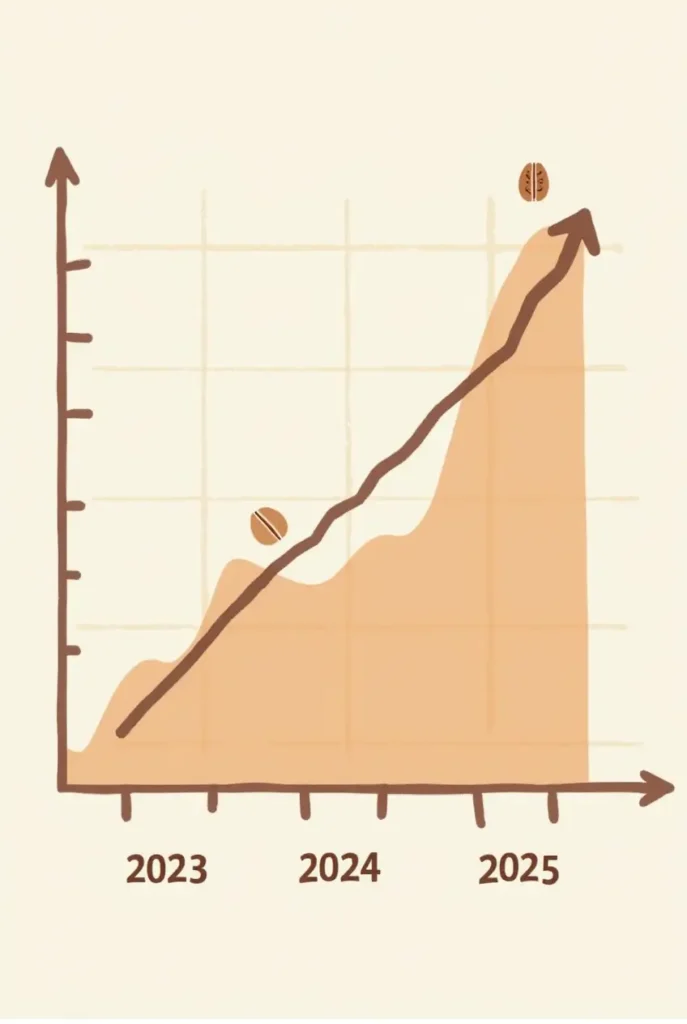
The Current State of Coffee Prices in 2025
Record-Breaking Price Points for Arabica and Robusta
Coffee markets have witnessed staggering increases across both major varieties this year. Arabica beans, prized for their smooth, complex flavors, have surged past $3.80 per pound—nearly double their value from just eighteen months ago. Meanwhile, Robusta, typically the more affordable option used in instant coffees and espresso blends, hasn’t escaped the upward trajectory, with prices climbing above $2.40 per pound.
These figures represent some of the highest price points recorded since the notorious coffee crisis of 2011, though today’s situation stems from a different combination of factors. What’s particularly alarming to industry analysts is the simultaneous spike across both varieties, leaving few alternatives for cost-conscious producers looking to substitute beans.

Comparing Coffee Price Trends to Historical Data
When examining historical patterns, today’s coffee market displays unusual characteristics. While coffee typically experiences cyclical price fluctuations—influenced by factors like biennial production cycles and seasonal weather patterns—the current upward trend has persisted significantly longer than historical norms suggest.
Looking back at five-year averages, we’re seeing sustained prices approximately 87% higher than expected patterns would predict. Unlike previous spikes that quickly corrected themselves, this surge shows remarkable staying power, suggesting deeper structural issues within the global coffee ecosystem.
Regional Variations in Coffee Prices Increase
Not all regions are experiencing identical price increases. Brazilian Arabica has seen the most dramatic jumps, while Ethiopian specialty coffees have increased more moderately, though still significantly. Colombian beans have maintained premium positioning but with somewhat less volatility than their Brazilian counterparts.
These regional differences highlight how local conditions—from climate variations to economic policies—create unique challenges across the coffee-producing world. For consumers, this translates to changing availability of your favorite regional varieties and shifting flavor profiles as blenders adjust their formulations.
How Retail Coffee Prices Are Responding to Market Changes
Your neighborhood café likely hasn’t increased prices at the same rate as raw bean costs—at least not yet. Many roasters and retailers are absorbing portions of these increases, fearing customer backlash if they passed along the full impact immediately. Nevertheless, industry data shows average retail coffee prices have climbed approximately 23% in the past year alone.
Supermarket brands have implemented multiple incremental price hikes, often coupled with subtle package downsizing—that pound of coffee might now be 12 ounces without an obvious price change. Meanwhile, specialty cafés are increasingly adopting tiered pricing structures, with premium single-origin options reaching unprecedented price points.
Key Factors Driving the Coffee Price Surge
Climate Change Impact on Major Coffee-Growing Regions
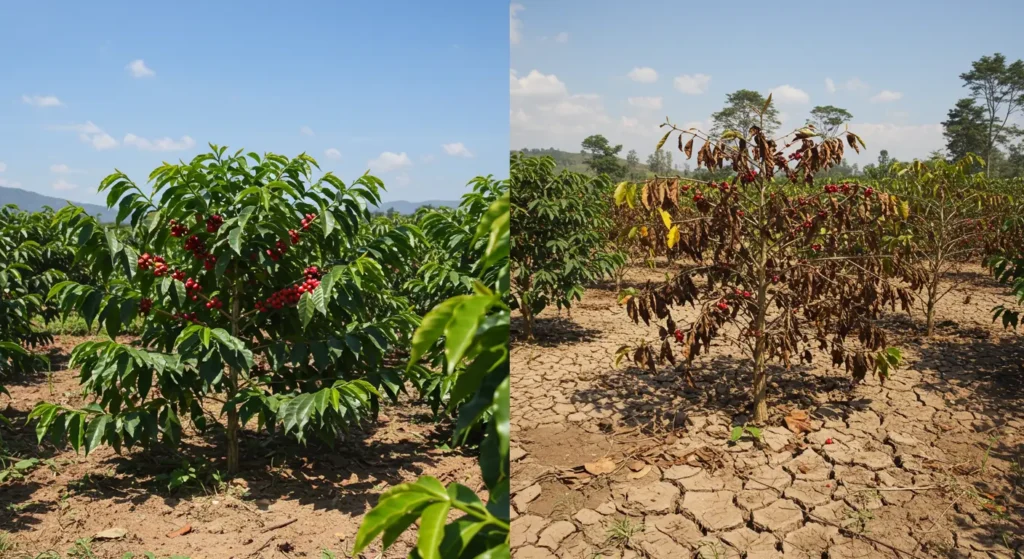
Climate disruptions stand at the forefront of coffee’s price predicament. Brazil’s coffee belt experienced consecutive years of below-average rainfall, followed by unexpected spring frosts that devastated flowering coffee plants. These extreme weather events reduced yields by an estimated 35% in some regions, dramatically restricting global supply.
Coffee plants are notoriously sensitive to temperature and moisture conditions, requiring very specific parameters to thrive. Even slight deviations can significantly impact yield and bean quality. With climate patterns becoming increasingly erratic, coffee farmers face mounting challenges in maintaining consistent production.
Labor Shortages and Production Costs in Coffee Farming
Finding workers to harvest coffee has grown increasingly difficult across producing regions. In Colombia, younger generations are migrating to urban centers, leaving farms without sufficient hands during crucial harvest periods. Meanwhile, Vietnam has experienced labor cost increases of nearly 40% over three years as workers seek higher-paying opportunities in manufacturing sectors.
These labor challenges translate directly to higher production costs, as farmers compete for a shrinking workforce or invest in mechanization—an option not feasible for all growing regions due to mountainous terrain where many premium coffees are cultivated.
Supply Chain Disruptions Affecting Coffee Distribution
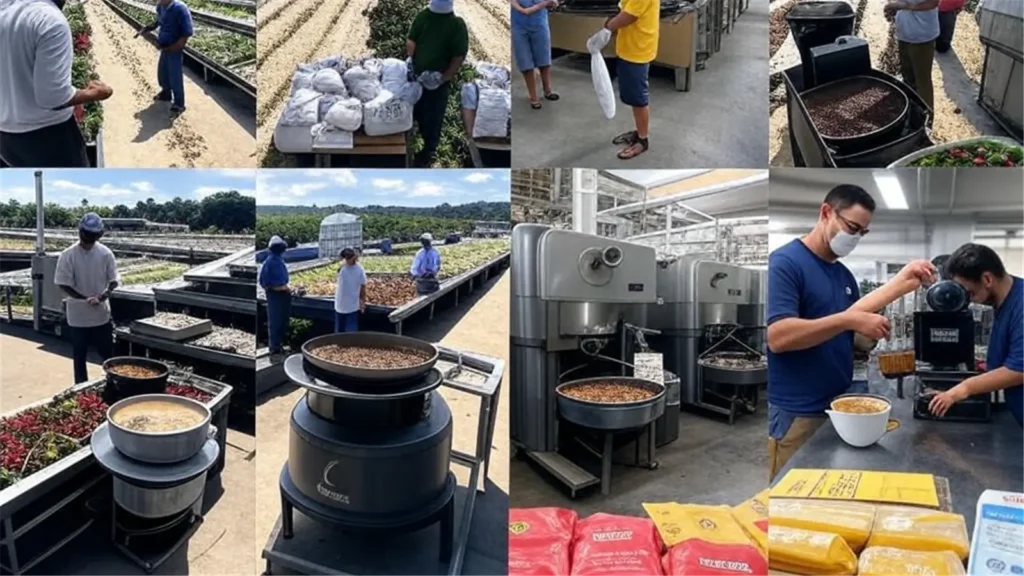
Global shipping hasn’t fully recovered from pandemic-era disruptions, with container shortages and port congestion still plaguing international trade routes critical to coffee distribution. Transportation costs for green coffee beans have increased by approximately 65% since 2023, adding substantial premiums to every stage of the coffee journey.
Furthermore, political instability in key shipping regions has created bottlenecks that result in delayed deliveries and increased storage costs. These logistical challenges compound already tight supplies, further pressuring prices upward.
Currency Fluctuations in Coffee-Producing Countries
The strengthening US dollar has created additional complexities for coffee markets. Since coffee is typically traded in dollars but produced in countries with different currencies, exchange rate fluctuations significantly impact producer economics and pricing decisions.
Brazil’s real and Colombia’s peso have both experienced substantial volatility, affecting how farmers and exporters price their products on international markets. These currency movements can sometimes mask or amplify underlying supply-demand fundamentals, adding another layer of complexity to coffee pricing.
Major Coffee-Producing Countries Facing Challenges
Brazil’s Coffee Production Issues and Market Influence
As the world’s largest coffee producer, Brazil’s challenges reverberate throughout global markets. Beyond weather difficulties, Brazilian coffee regions face intensifying competition for agricultural land from more profitable crops like soybeans and sugar cane. This pressure has slowed expansion of coffee plantations despite rising prices.
Additionally, Brazil’s aging coffee tree stock requires significant reinvestment, with many farms operating with plants well past peak productivity. The combination of these factors has reduced Brazil’s coffee exports by approximately 28% compared to previous five-year averages.
Vietnam’s Robusta Export Limitations
Vietnam, the world’s premier Robusta producer, has implemented export quotas to protect domestic supplies and stabilize local prices. These restrictions have removed approximately 15% of expected Robusta volumes from international markets, significantly tightening supply for commercial coffee blenders who rely heavily on these beans.
Vietnamese farmers are also increasingly converting coffee plantations to other crops like avocados and durian, which command premium prices in Asian markets with fewer production challenges than coffee. This gradual reduction in growing area threatens long-term Robusta availability.
Colombia’s Farming Transformation Efforts
Colombia’s coffee sector is undergoing fundamental transformation as farmers adapt to changing conditions. Many producers are shifting toward higher-value specialty coffees that command premium prices but yield lower volumes. While potentially beneficial for individual farmers, this transition has reduced Colombia’s overall export volume.
The Colombian Coffee Growers Federation has launched ambitious programs to modernize farming practices, but these initiatives require time and substantial investment before productivity improvements materialize. In the interim, production costs continue climbing while output remains constrained.
Ethiopian Coffee Industry Under Pressure
Ethiopia’s ancient coffee forests face mounting challenges from climate shifts and economic pressures. As Africa’s largest producer and the genetic homeland of Arabica coffee, disruptions here have outsized impacts on coffee biodiversity and specialty markets.
Political tensions within Ethiopia have complicated export procedures, while transportation infrastructure limitations hinder efficient movement of beans from remote growing regions to international markets. Despite premium prices for Ethiopian coffees, these constraints have limited supply growth when markets need it most.
Industry Response to Rising Coffee Costs
How Major Companies Like Starbucks and Nestlé Are Adapting
Industry giants aren’t immune to these market pressures. Starbucks has implemented three price increases in eighteen months while simultaneously exploring longer-term contracts with producers to secure supply. The company has also accelerated development of ready-to-drink alternatives that require less coffee per serving.
Nestlé has leaned heavily into its vertically integrated supply chain, leveraging direct relationships with farmers to maintain steadier supplies. Nevertheless, their financial reports show coffee division margins under significant pressure despite multiple consumer price adjustments across their portfolio.
Small Roasters’ Strategies for Survival
Independent coffee roasters face particularly difficult choices as their buying power can’t match multinational competitors. Many have developed creative approaches, from offering subscription models that smooth price fluctuations to creating blends that strategically incorporate less affected origin beans.
Some smaller operations have pivoted toward becoming education-focused destinations, hosting tasting events and brewing classes to create additional revenue streams less dependent on volatile coffee prices. These adaptations help preserve customer relationships while navigating challenging market conditions.
Price Hedging and Futures Trading in the Coffee Market
Coffee futures markets have seen unprecedented volatility, with trading volumes reaching record highs as industry participants scramble to manage price risks. Large roasters have extended their hedging horizons, locking in prices further into the future despite premium costs for these longer-term contracts.
Smaller players without sophisticated hedging capabilities often face difficult spot market conditions when purchasing beans, creating further competitive disadvantages in an already challenging environment.
International Coffee Organization (ICO) Initiatives
The ICO has launched emergency consultations between producing and consuming nations, seeking cooperative approaches to market stabilization. Proposed measures include coordinated release of strategic reserves, production incentive programs, and improved market transparency tools.
While these initiatives show promise for long-term stability, immediate relief remains elusive as structural challenges require sustained investment and policy coordination that transcends quick fixes.
Impact on Consumers and Coffee Culture
Changing Consumer Behavior Amid Higher Coffee Prices
Your coffee habits are likely evolving in response to higher prices. Industry surveys indicate approximately 35% of consumers have adjusted their coffee routines, whether by brewing more at home, selecting less expensive varieties, or reducing overall consumption.
Brewing methods that maximize extraction efficiency—like pour-over systems that extract more flavor from fewer grounds—have gained popularity. Meanwhile, coffee shops report increasing popularity of smaller serving sizes as customers seek to maintain their coffee ritual while managing costs.
Alternative Coffee Products Gaining Popularity

Coffee alternatives and extenders have experienced remarkable growth. Chicory blends, mushroom coffees, and grain-based substitutes saw sales increase by 43% last year as cost-conscious consumers explored options. Even traditional coffee companies have introduced hybrid products stretching pricier coffee beans with additional ingredients.
Meanwhile, technology companies have accelerated development of molecular coffee alternatives—products that recreate coffee’s flavor compounds without actual coffee beans. While still niche, these innovations signal potential long-term shifts in how we define and consume “coffee.”
Specialty vs. Commercial Coffee Price Disparities
The price gap between specialty and commercial coffees has narrowed considerably. While specialty prices have increased, commercial grades have seen more dramatic percentage jumps, reducing the relative premium formerly commanded by higher-quality beans.
This convergence creates challenging dynamics for specialty producers who must maintain costly quality standards while seeing their price advantage erode. For consumers, the shrinking price differential sometimes makes premium options more appealing than in previous market conditions.
The Rise of Direct Trade Relationships
Amidst market turbulence, direct trade relationships between roasters and producers have gained renewed importance. These arrangements often include price guarantees that transcend market fluctuations, providing stability for both farmers and coffee companies.
Consumers increasingly seek coffees with transparent sourcing stories, willing to pay premiums for beans with clear provenance and fair producer compensation. This trend creates opportunities for farmers to capture more value despite challenging market conditions.
Future Outlook for Coffee Prices
Expert Predictions for Late 2025 and Beyond
Analysts remain divided on coffee’s price trajectory, though consensus points toward continued elevation through at least early 2026. Production responses typically lag price signals by 3-5 years in coffee markets due to the time required for new plantings to reach maturity.
Weather forecasting services project ongoing climate volatility across coffee regions, suggesting supply challenges aren’t temporary anomalies but rather persistent conditions requiring fundamental adaptation strategies.
Sustainable Solutions for Coffee Price Stability
Long-term price stability requires reimagining coffee production systems. Investment in climate-resilient varieties has accelerated dramatically, with research institutions developing beans that withstand higher temperatures and irregular rainfall patterns while maintaining desirable flavor profiles.
Agroforestry approaches—integrating coffee with complementary crops and beneficial shade trees—show promise for creating more resilient growing environments while diversifying farmer income streams. These techniques reduce vulnerability to both market and climate volatility.
Emerging Coffee-Growing Regions and Market Diversification
Coffee cultivation is expanding into previously unsuitable regions as traditional areas face mounting challenges. Higher-elevation sites in existing producing countries are being developed, while areas like China’s Yunnan province and parts of California are emerging as nascent coffee territories.
While these new regions can’t immediately replace established production, they represent important diversification in a historically concentrated supply chain highly vulnerable to regional disruptions.
How Technology Is Transforming Coffee Production Economics
Technological innovation offers glimpses of hope amid coffee’s challenging landscape. Precision agriculture tools—from soil moisture sensors to satellite imagery analysis—help farmers optimize inputs and improve yields despite difficult conditions.
Processing innovations that reduce water usage and labor requirements are gaining traction, potentially reducing production costs that have climbed dramatically. Meanwhile, genetic research—focusing on natural breeding rather than genetic modification—promises varieties combining resilience with exceptional cup quality.
Moving Forward in a Changed Coffee Landscape
The coffee market transformation underway represents more than a temporary price spike—it signals fundamental restructuring of a global industry adapting to new realities. For you as a consumer, understanding these dynamics helps contextualize changing prices and product availability.
Supporting sustainability initiatives, exploring diverse coffee origins, and perhaps adjusting expectations around coffee’s true cost all contribute to a healthier coffee ecosystem that can weather current challenges while building resilience for future generations of coffee lovers.
Your coffee ritual might cost more these days, but knowing why can deepen appreciation for the complex journey behind every bean. What other agricultural products might face similar challenges in our changing world? Perhaps it’s worth contemplating over your next (slightly more expensive) cup.
Have insights about how coffee price changes are affecting your area? Share your experiences in the comments below or join our newsletter for quarterly updates on coffee market trends and ways to enjoy great coffee even during challenging times.
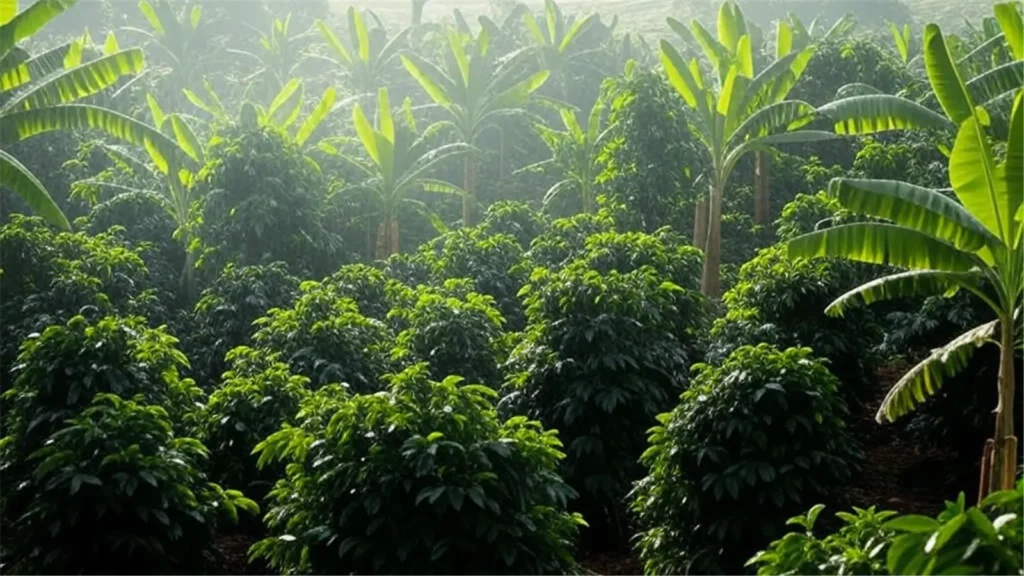

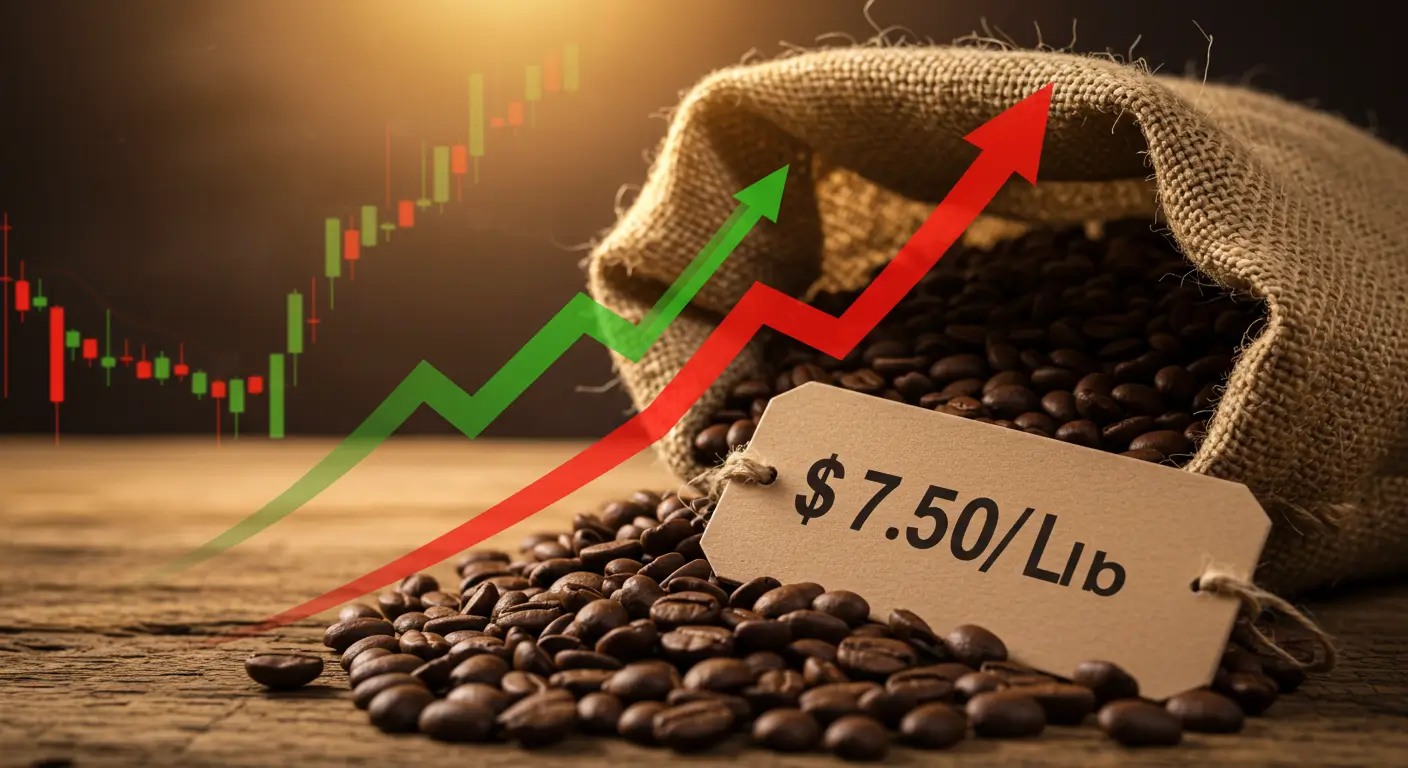
1 thought on “Soaring Coffee Prices: What’s Behind the Surge in 2025?”